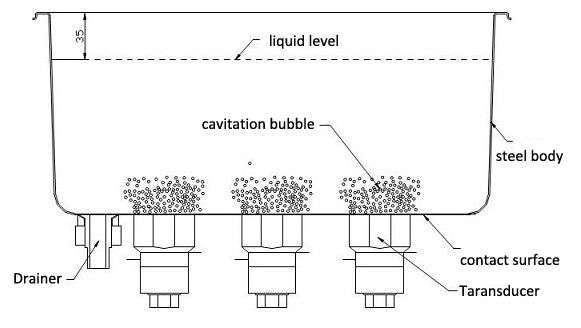What is ultrasonic cleaning?
The process of removing
contaminants from substances that are immersed in liquid using high frequency
sound waves are known are ultrasonic cleaning. These inaudible waves will
create scrubbing action and removes contaminants from the substance that is in
contact with fluid.
Its ability to
penetrate and clean surfaces like blind holes, thread roots, small electronic
parts, wires etc. using sound conducting liquid
makes it unique.
Working :
Sound waves are
introduced into the liquid by means of transducers which are mounted onto the
cleaning tank. The waves can be compression wave or expansion wave. The
molecules of the cleaning liquid will be tightly compressed together in
compression wave while in expansion wave, these molecules are pulled apart,
creating microscopic bubbles (cavity). These bubbles exit only for a split of
second and cannot be seen using naked eyes. The formation of these bubbles are
known as cavitation. These bubbles
collapse due to increase in pressure around it. This produces huge amount of
vacuum energy in the form of heat and pressure and cause a rise in temperature
upto 5000˚C. This high temperature combined with the velocity of liquid helps
in cleaning more intricate parts. As the buble expansion and collapse cycle
takes place in a short span of time, the surrounding liquid will absorb the
heat and cools the area rapidly. So the tank and liquid will only gets warm, it
does not heat excessively.
Few
examples of application of ultrasonic cleaning:
- Lenses
- Cathode ray tube components ( picture tube components of TV)
- Quartz crystals
- Aircraft components, brakes, machine parts.
- Surgical instruments
*content/pictures used for educational purpose.

Comments
Post a Comment